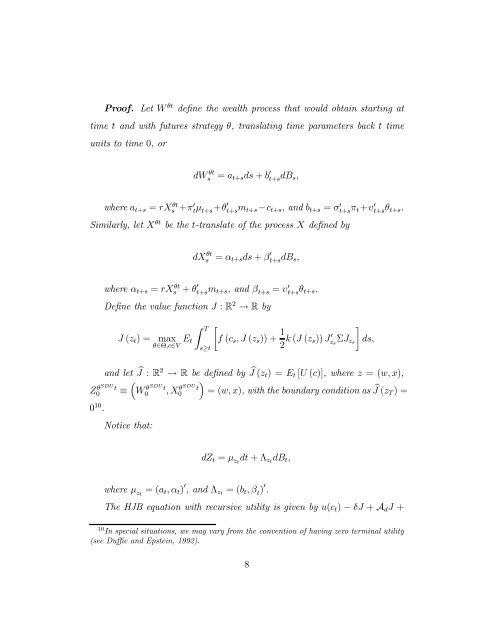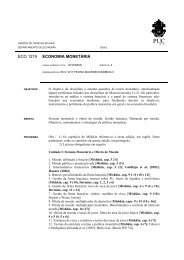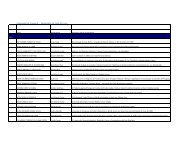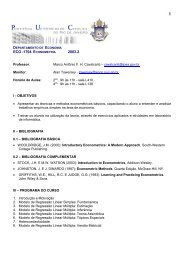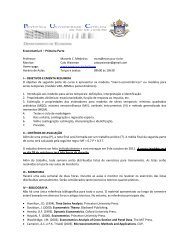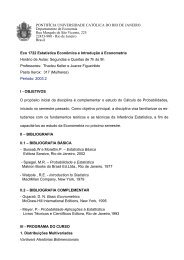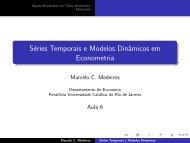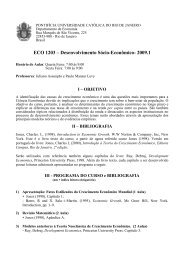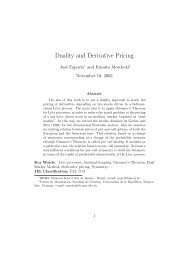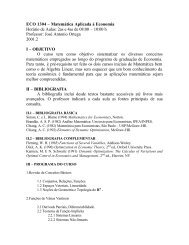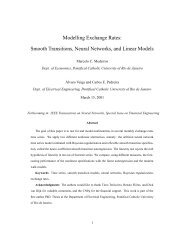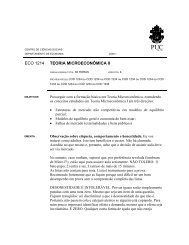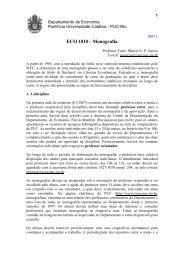Dynamic Hedging with Stochastic Differential Utility
Dynamic Hedging with Stochastic Differential Utility
Dynamic Hedging with Stochastic Differential Utility
Create successful ePaper yourself
Turn your PDF publications into a flip-book with our unique Google optimized e-Paper software.
Proof. Let W θt define the wealth process that would obtain starting attime t and<strong>with</strong>futuresstrategyθ, translating time parameters back t timeunits to time 0, ordW θts = a t+s ds + b 0 t+sdB s ,where a t+s = rXs θt +π 0 tµ t+s +θ 0 t+sm t+s −c t+s ,andb t+s = σ 0 t+sπ t +υ 0 t+sθ t+s .Similarly, let X θt be the t-translate of the process X defined bydX θts = α t+s ds + β 0 t+sdB s ,where α t+s = rXs θt + θ 0 t+sm t+s ,andβ t+s = υ 0 t+sθ t+s .Define the value function J : R 2 → R byJ (z t )=Z Tmax E t·f (c s ,J(z s )) + 1θ∈Θ,c∈Vs≥t2 k (J (z s)) Jz 0 sΣJ zs¸ds,and let J b : R 2 → R be defined by J b (z t )=E t [U (c)], wherez =(w, x),³´Z θSDU t0 ≡ W θSDU t0 ,X θSDU t0 =(w, x), <strong>with</strong> the boundary condition as J b (z T )=0 10 .Notice that:dZ t = µ ztdt + Λ zt dB t ,where µ zt=(a t , α t ) 0 ,andΛ zt =(b t , β t ) 0 .The HJB equation <strong>with</strong> recursive utility is given by u(c t ) − δJ + A d J +10 In special situations, we may vary from the convention of having zero terminal utility(see Duffie and Epstein, 1992).8


